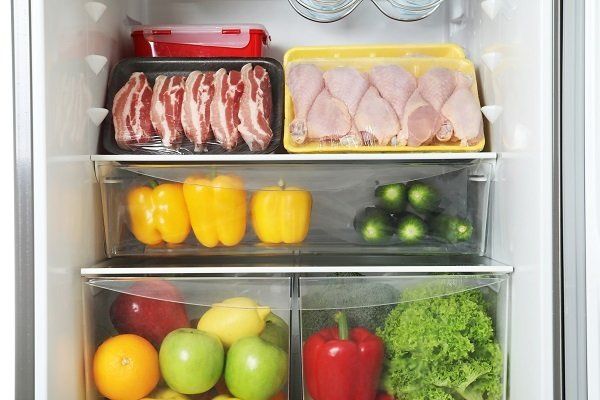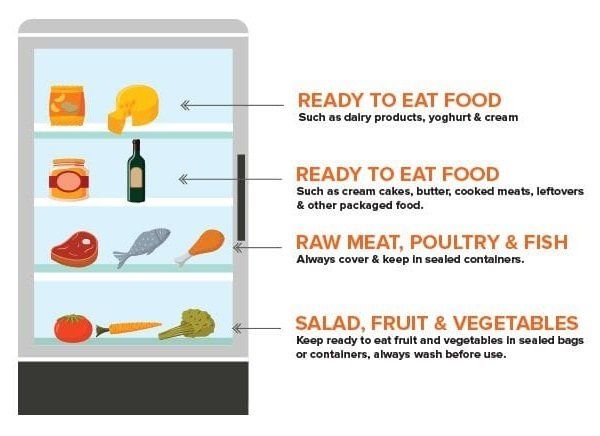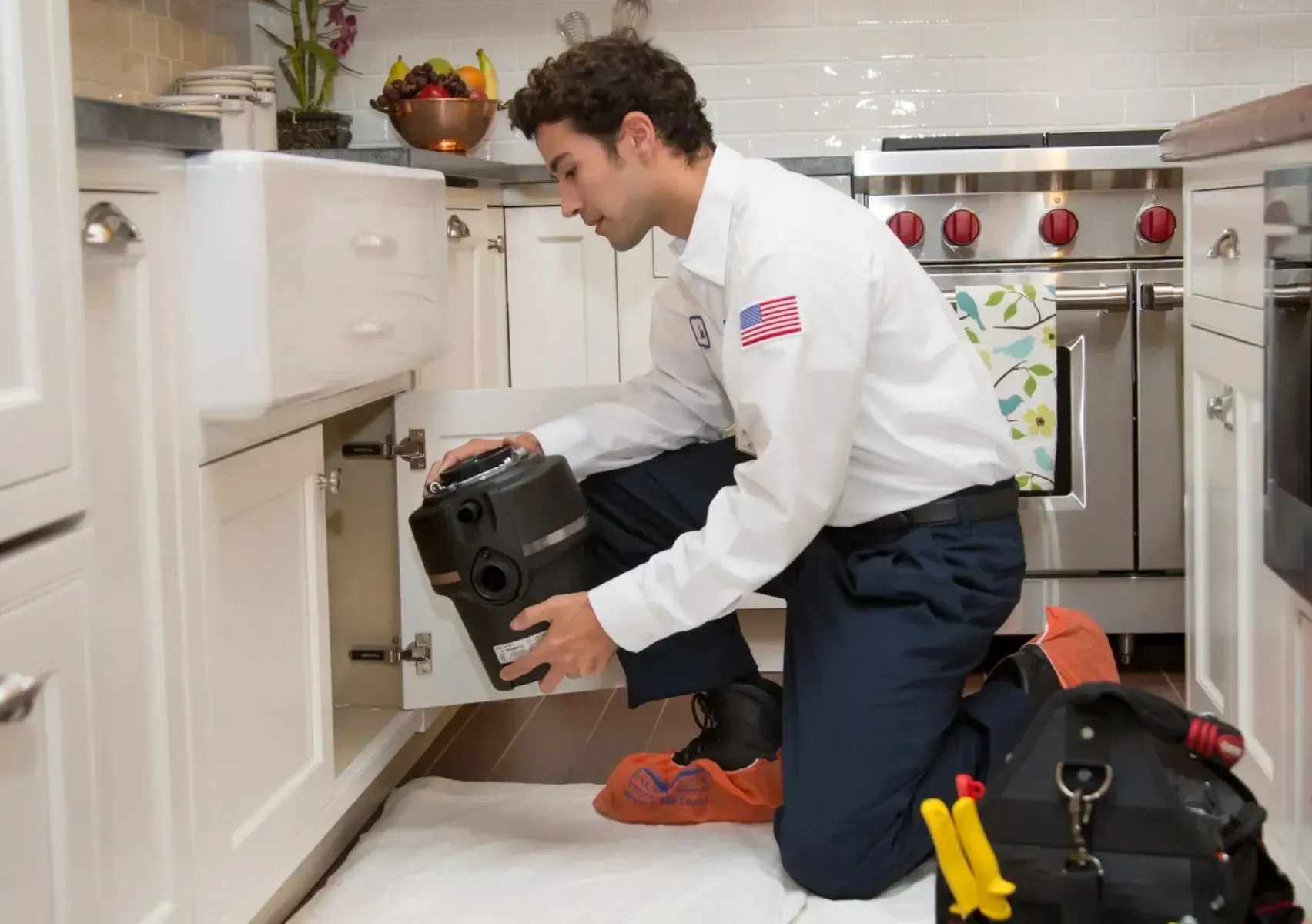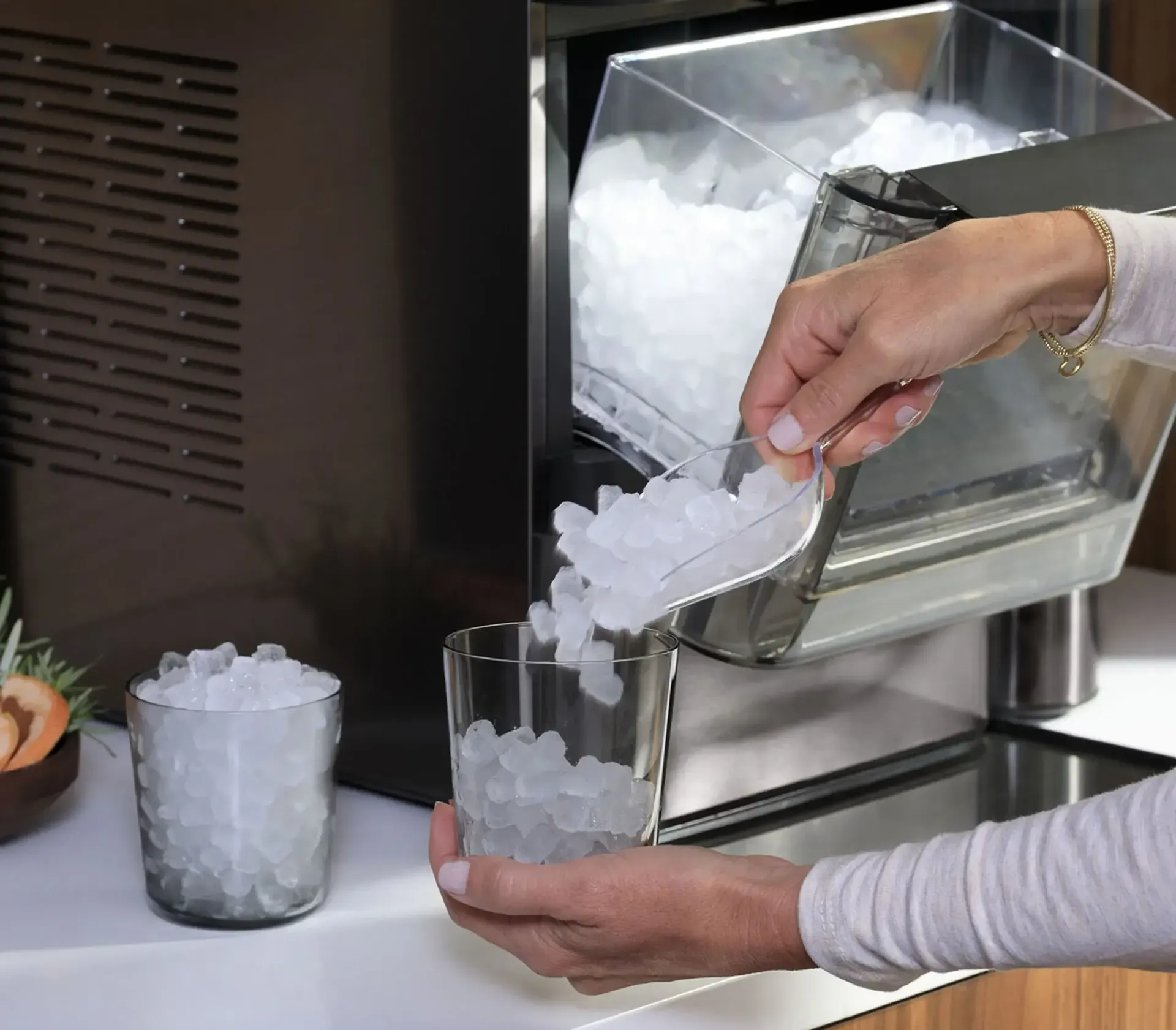It’s a familiar scene. You’re standing in the doorway for five minutes searching for that elusive bottle of coffee creamer. Your eyes scan the cluttered shelves, purposely avoiding that unidentifiable green ooze that’s been congealing in a bag of neglected vegetables. You notice that for some reason you have two different jars of minced garlic, both opened, and those Thai leftovers that you meant to eat from the other night have taken on a questionable appearance, odor, and possibly alien lifeforms.
Sometimes a refrigerator’s contents can get a little out of hand, but there’s no need to feel like your life has gotten out of hand too. Your fridge just needs a little organization.
Simple Steps For Organizing Your Refrigerator
In our blog, we’ll give you tips for organizing your refrigerator, including:
- why you should organize your refrigerator (spoilers: it saves money and prevents food from, well, spoiling as fast)
- where certain foods should be put for sanitary reasons
- optimal places to put certain food items so that they’ll last longer
- tips for maintaining your newly-organized refrigerator

Why Organize? Well, Why NOT Organize?
It doesn’t always occur to people, but organizing your refrigerator has major benefits:
- You can see at a glance what food you have, including what you’re missing.
- You waste less food and save more money in the process.
- You spend less time searching for food, so the refrigerator spends less time open and wasting energy.
- Bonus: You get to feel like a responsible adult. (It’s a feeling that’s far too underrated.)
Where To Store Food For Sanitary Reasons
You might be tempted to put certain items that you reach for frequently in your refrigerator’s most accessible locations. However, it’s more important to consider food safety when choosing where to store food items.
Here is the most sanitary arrangement you can use when storing food (it’s also the one used by professional chefs):
- Upper Shelves: This is where you should store foods that need no cooking to be safe to eat (like drinks and leftovers).
- Bottom Shelves: This is where you should store raw foods (like ground beef and chicken). Why? If raw foods are stored on top and then drip down onto foods that don’t need cooking, cross-contamination can occur.

Where To Put Different Foods So That They’ll Last Longer
Your refrigerator is actually not a consistent temperature throughout. Some parts of it are warmer than others, which makes them less suitable for extending the freshness of certain foods.
Here are the different areas of your refrigerator and what foods are best stored there:
- Bottom Shelf: This is the coldest part of your refrigerator is at the very back of your bottom shelf. This is where you’ll want to store raw meat, deli meat, and dairy products (other than soft cheeses and butter).
- Middle Shelf: your middle shelf will provide the most consistent temperature. Store your eggs there to keep them fresh longer.
- Door: The door is the warmest part of your refrigerator. While not ideal for things like eggs and raw meat, the door is a viable and convenient option for storing condiments, soft cheeses, and butter.
- Top Shelf: The top shelf is a good place to store drinks, leftovers, and other food that doesn’t need to be quite so cold as bottom drawer items.
- Vegetable Drawer: Vegetables will last longer if the air is more humid, so make use of your refrigerator’s vegetable drawer or keep your veggies in a loose plastic bag.
- Crisper: Fruits will stay fresh longer if the air is drier, so keep them in the crisper.
Tips For Maintaining Your Newly-Organized Refrigerator
Knowing where it’s best to store different food types in your refrigerator is important. Now comes the fun part: finding ways to not only get organized but stay organized.
Try these simple hacks with your refrigerator to make this aspect of housekeeping just a little bit easier:
- Placemats or Plastic Wrap: To ease the pain of cleaning up spills, try lining the shelves with waterproof placemats or plastic wrap.
- A Turntable or Lazy Susan: Store items on a turntable or lazy susan so that you’ll be less likely to forget what’s in the back of the fridge. Just spin to see what you have!
- Baskets and Bins: If your refrigerator is short on shelves and specialized compartments, create impromptu “drawers” on top of your refrigerator’s shelves with plastic, easy-to-wash baskets or bins, and label them. Speaking of labels…
- Make Your Own Labels: Use a Sharpie and masking tape or painters tape to make labels on food items with the date you opened them.
- Take a Snapshot: Not really a grocery list person? Take a quick picture or two of your refrigerator’s interior before you go grocery shopping. You’re much less likely to buy duplicates of anything!
It just takes a few easy steps to get a refrigerator that’s fully organized from top to bottom. Feeling motivated to throw out that mysterious green gunk and get started? We knew you would.
Having trouble with your fridge that some reorganizing can’t solve? Don’t replace it–contact Fix Appliance Repair online or call for a professional repair. We specialize in the repair of most refrigerator brands, including GE, LG, Samsung, and Whirlpool. We come prepared with the necessary parts and tools to solve any problem you may be experiencing. Whether a light has gone out or the entire unit has stopped working, we’re here to provide expert repair service.



